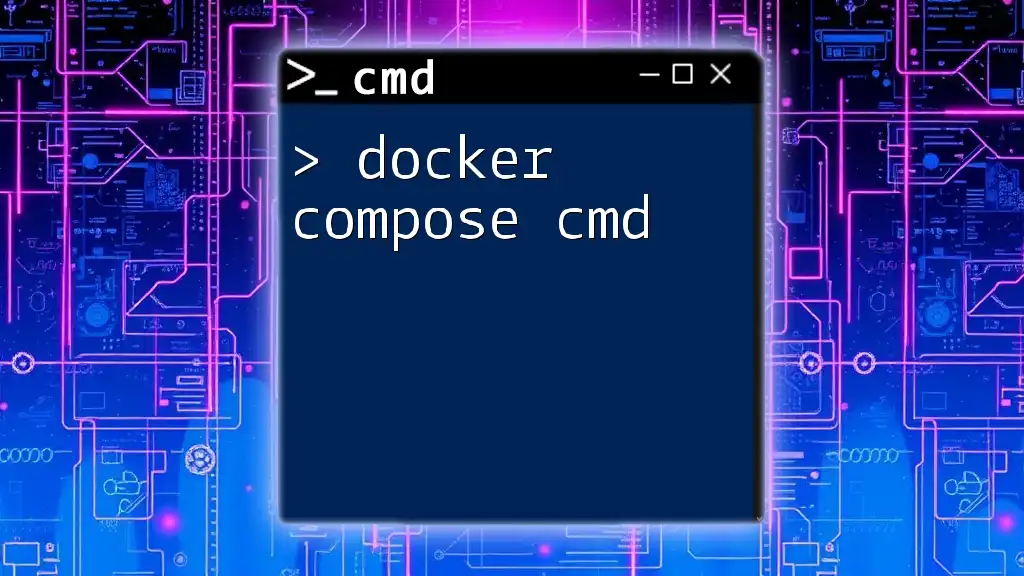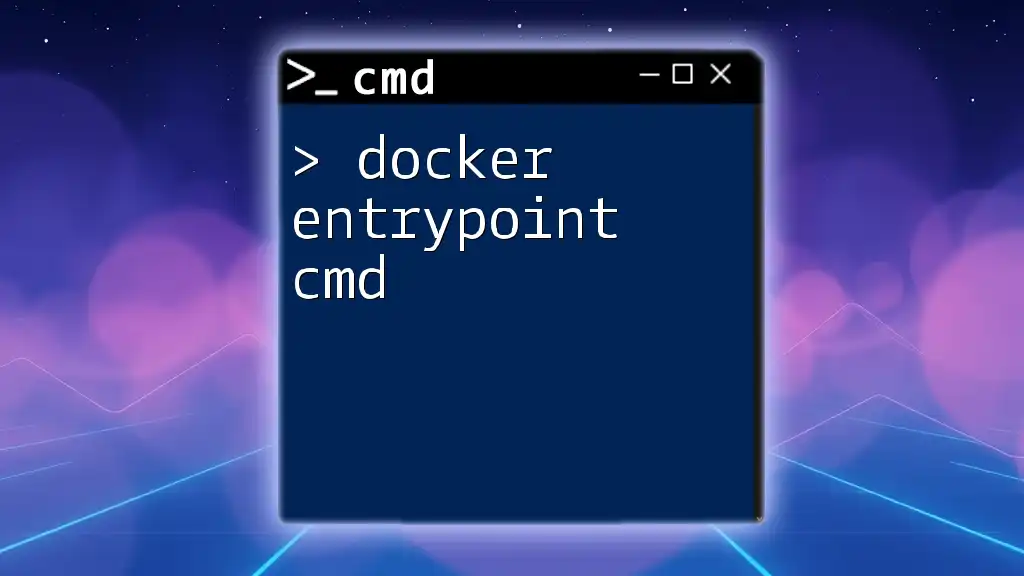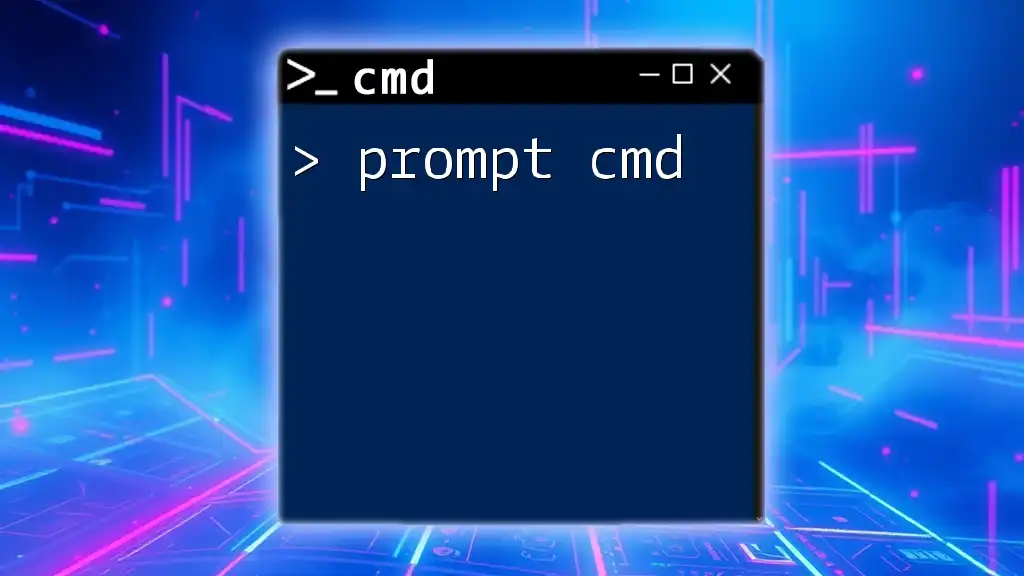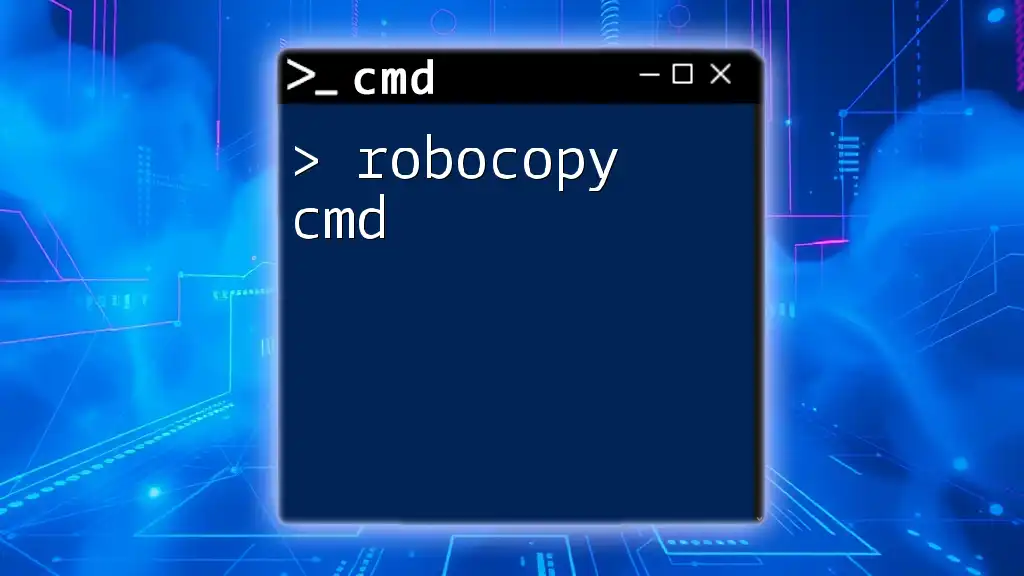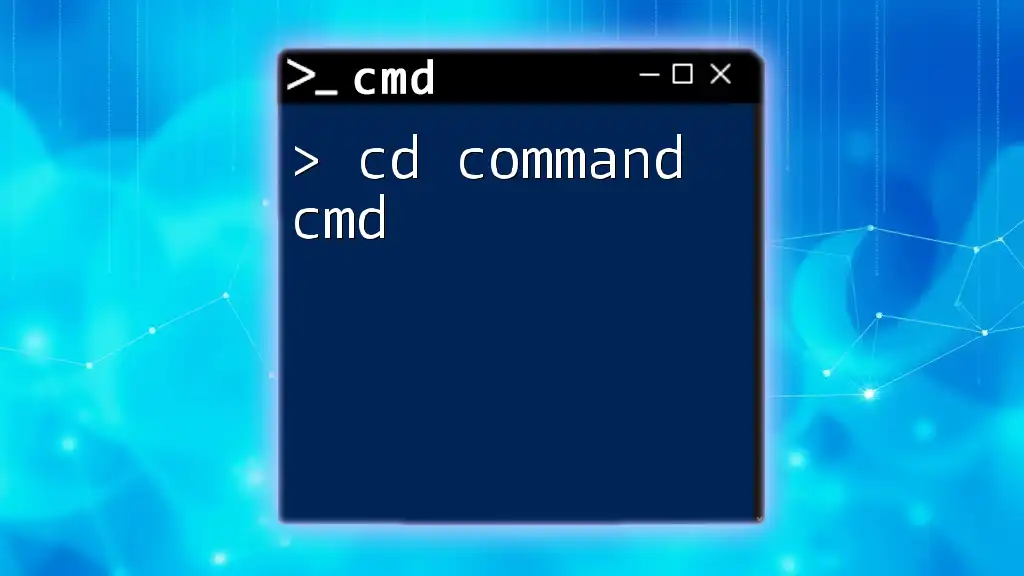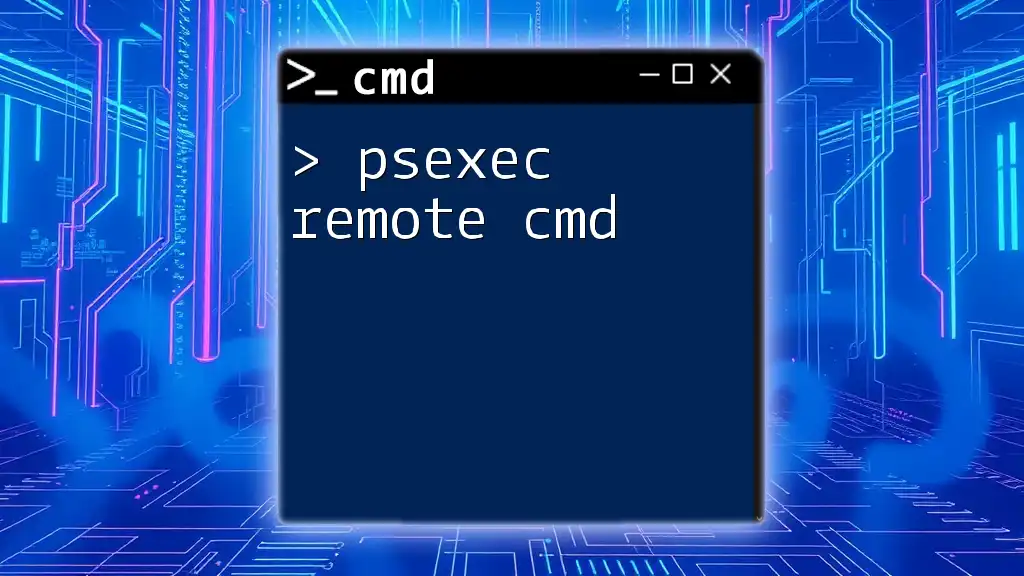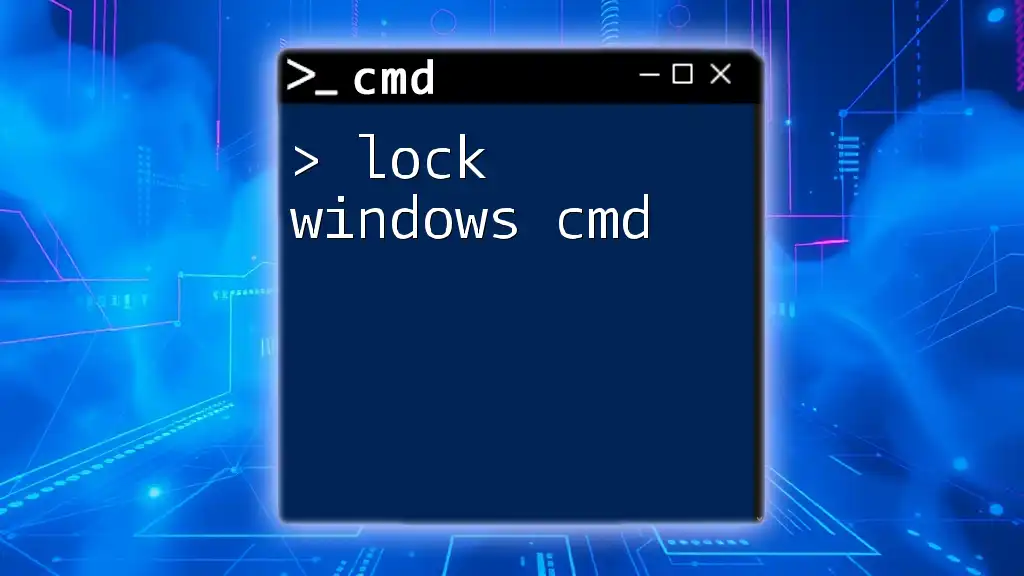Docker Compose is a tool that allows you to define and run multi-container Docker applications using a simple configuration file, streamlining the process of managing complex setups with ease.
Here’s a basic example of a Docker Compose command to start your services defined in a `docker-compose.yml` file:
docker-compose up
Understanding Docker Compose
What is Docker Compose?
Docker Compose is a powerful tool that simplifies the process of defining and running multi-container Docker applications. With Docker Compose, you can specify all your application services in a single YAML file, allowing for a streamlined way of managing complex apps. The configuration encompasses the necessary services, networks, and volumes in a neat format.
Why Use Docker Compose?
Utilizing Docker Compose offers several advantages:
- Simplification: Manage multiple containers with a single command, making it easier to run entire applications rather than individual containers.
- Consistency: Ensure that your application behaves the same across various environments by running the same container images.
- Scalability: Effortlessly scale your services by adjusting the number of container instances through simple commands, which is crucial for applications that demand high availability and performance.
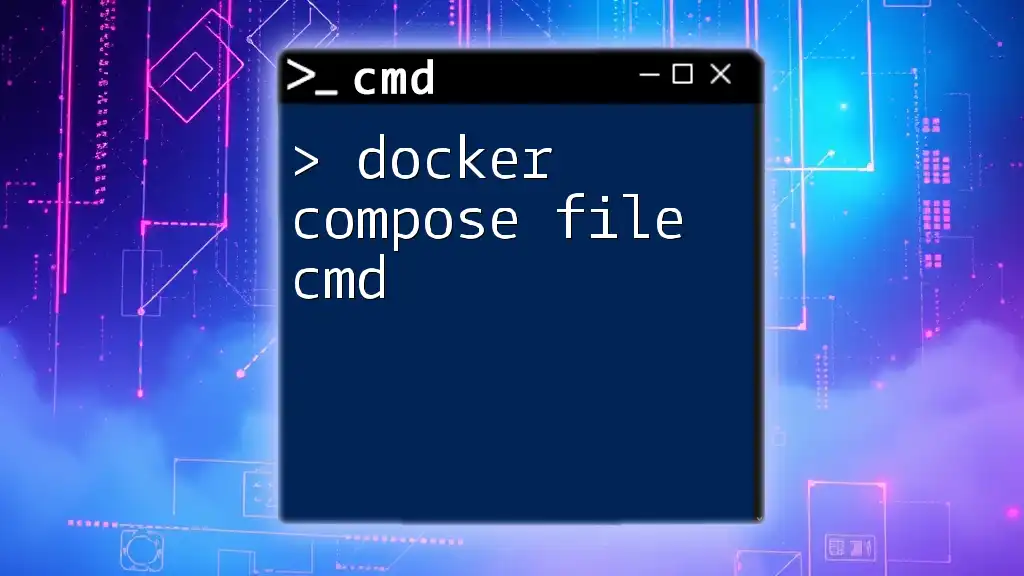
Fundamentals of Docker Compose Command Line Interface (CLI)
Installing Docker Compose
Installing Docker Compose is a straightforward process. You can use the following command to download and install the latest version:
curl -L "https://github.com/docker/compose/releases/download/$(curl -s https://api.github.com/repos/docker/compose/releases/latest | grep -oP 'tag_name": "\K(.*)(?=")')/docker-compose-$(uname -s)-$(uname -m)" -o /usr/local/bin/docker-compose
chmod +x /usr/local/bin/docker-compose
After running this command, verify the installation by typing:
docker-compose --version
Basic Docker Compose Commands
Understanding a few core commands will set you off on the right track for using Docker Compose effectively:
-
`docker-compose up`: This command starts your application services as defined in your `docker-compose.yml`. By adding the `-d` flag, you can run the containers in detached mode:
docker-compose up -d -
`docker-compose down`: Used to stop and remove all containers defined in the configuration file. This is useful to clean up resources after development or testing.
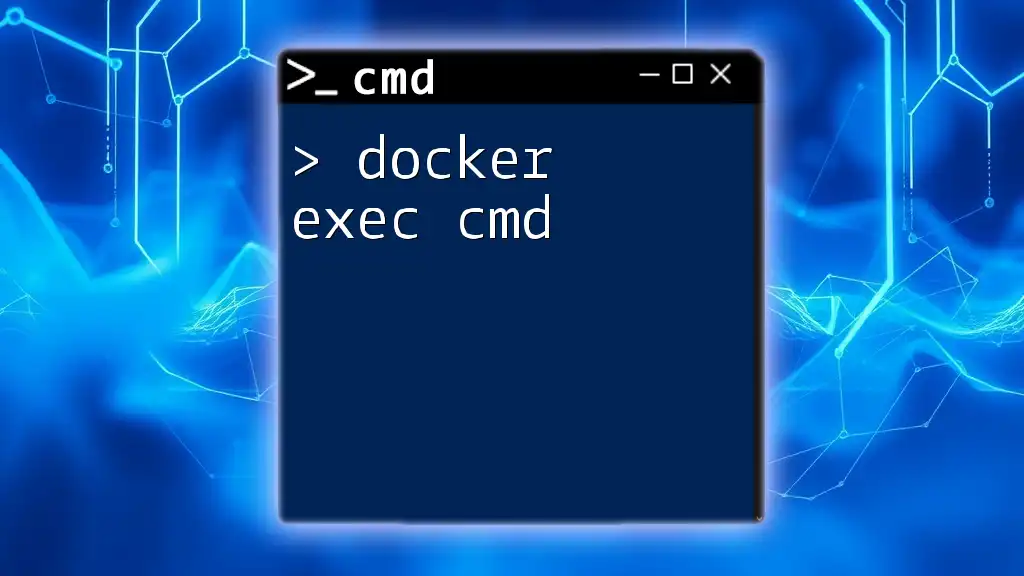
Understanding the docker-compose.yml File
Structure of a docker-compose.yml File
The central piece of Docker Compose is the `docker-compose.yml` file. It contains several key sections that define how your application is structured and operates:
- version: Specifies the version of the Docker Compose file format.
- services: Lists the different services (containers) that make up your application.
- networks: Defines the networks that allow your containers to communicate with each other.
- volumes: Specifies the data volumes that persist data outside of containers.
Defining Services
Here's an illustrative example of defining services in a `docker-compose.yml` file:
version: '3'
services:
web:
image: nginx # Use NGINX as the web service
ports:
- "80:80" # Map port 80 of the host to the container
db:
image: postgres # Use POSTGRES as the database service
environment:
POSTGRES_DB: example # Set the database name
POSTGRES_USER: user # Set the username
POSTGRES_PASSWORD: password # Set the password
This configuration clearly outlines the services, their images, and how they interact with the host system.
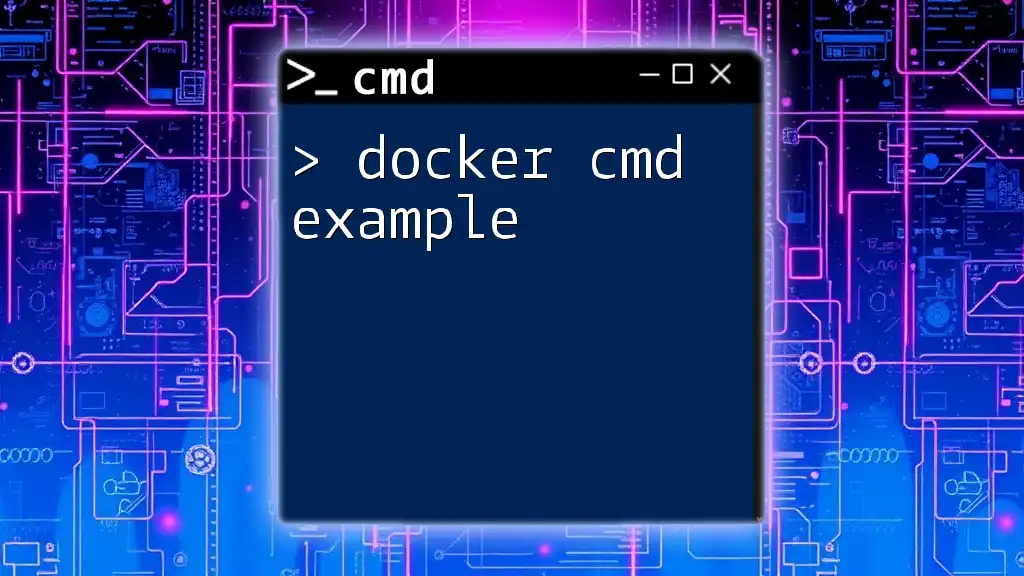
CMD in Docker Compose
What is CMD in Docker Context?
In the Docker context, CMD is an instruction in a `Dockerfile` that specifies the command that should be executed when a container is started. It plays a critical role by determining the default behavior of the container at runtime.
Using CMD in docker-compose.yml
You can utilize CMD within the `docker-compose.yml` file to define default commands for your containers. For instance, if you have a Python application, you can specify the command directly:
services:
myapp:
image: myapp_image
command: ["python", "app.py"]
This example indicates that when the `myapp` service is started, it will automatically run `python app.py`, allowing the application to start smoothly.
Practical Scenarios
Providing Default Commands
Setting default commands in your `docker-compose.yml` makes it easy to ensure that all instances of a service start the same way.
Overriding Default Commands
In different environments (like development, testing, or production), you may have scenarios where overriding default commands is necessary. Docker Compose allows for this flexibility, enabling you to supply alternative commands depending on your needs.
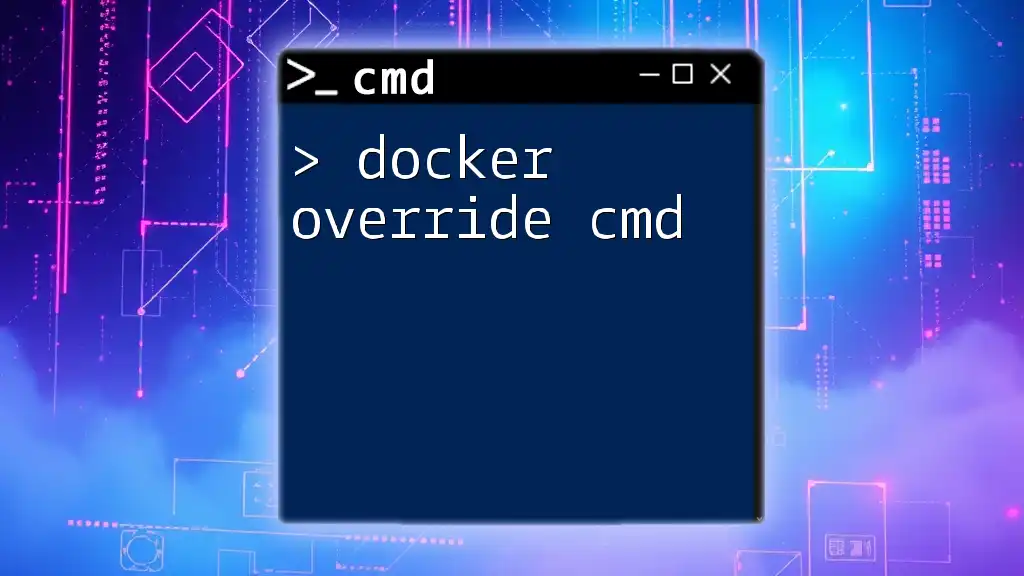
Advanced Usage of CMD with Docker Compose
Multi-Stage Builds and CMD
Multi-stage builds enable you to use multiple `FROM` statements in a `Dockerfile` to create smaller, more efficient images. When utilizing multi-stage builds, you can set CMD for different stages, thus optimizing your image size:
services:
myservice:
build:
context: .
dockerfile: Dockerfile
command: ["node", "server.js"]
This informs Docker Compose which command to execute when starting the `myservice` service, ensuring that the correct application starts.
Debugging with CMD
When debugging issues within your container, it’s often necessary to run the service interactively. The following command helps you to enter the shell of a specific service:
docker-compose run myapp /bin/bash
This command will allow you to explore the container’s file system and logs to diagnose problems effectively.
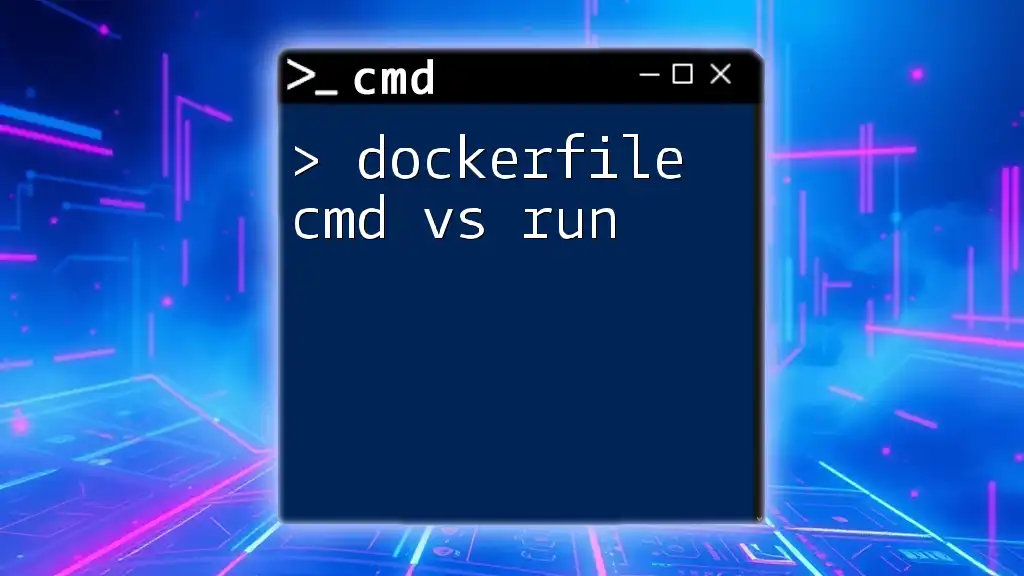
Best Practices for Using CMD in Docker Compose
Maintainability
One of the most important aspects of working with Docker Compose is ensuring maintainability. Keeping commands clear and concise helps other developers (and yourself in the future) to understand the configurations at a glance. Adding comments in the YAML file is a great practice, as it provides context for decisions made during the configuration.
Security Considerations
When defining commands, be mindful of security. Avoid hardcoding sensitive information directly in your `docker-compose.yml` file. Instead, use environment variables:
services:
myservice:
environment:
- DATABASE_PASSWORD=${DATABASE_PASSWORD} # Use environment variables for sensitive data
This approach not only secures sensitive information but also aids in managing configurations across different environments.
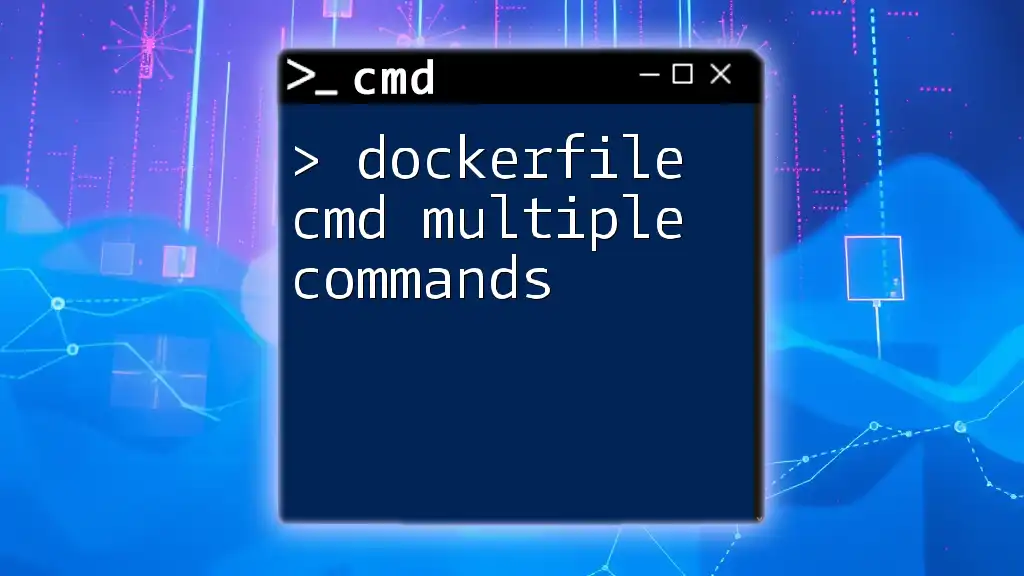
Conclusion
Understanding how to effectively utilize CMD in Docker Compose is crucial for developing robust containerized applications. From setting up your containers to overriding commands as necessary, the flexibility offered by Docker Compose combined with the CMD directive can greatly enhance your deployment strategies. By practicing these principles and engaging with the community, you will further refine your skills and knowledge in the world of Docker. Embrace the power of Docker Compose CMD, and elevate your container orchestration to new heights!
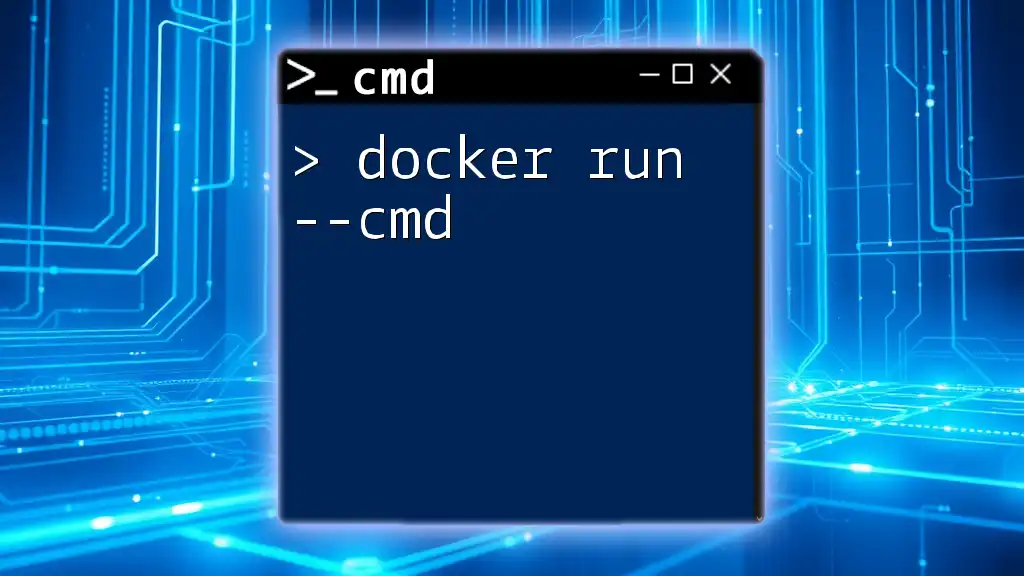
Additional Resources
For further exploration, consider reviewing official Docker documentation and participating in community forums that focus on Docker and Docker Compose to stay updated on best practices and new functionalities.

